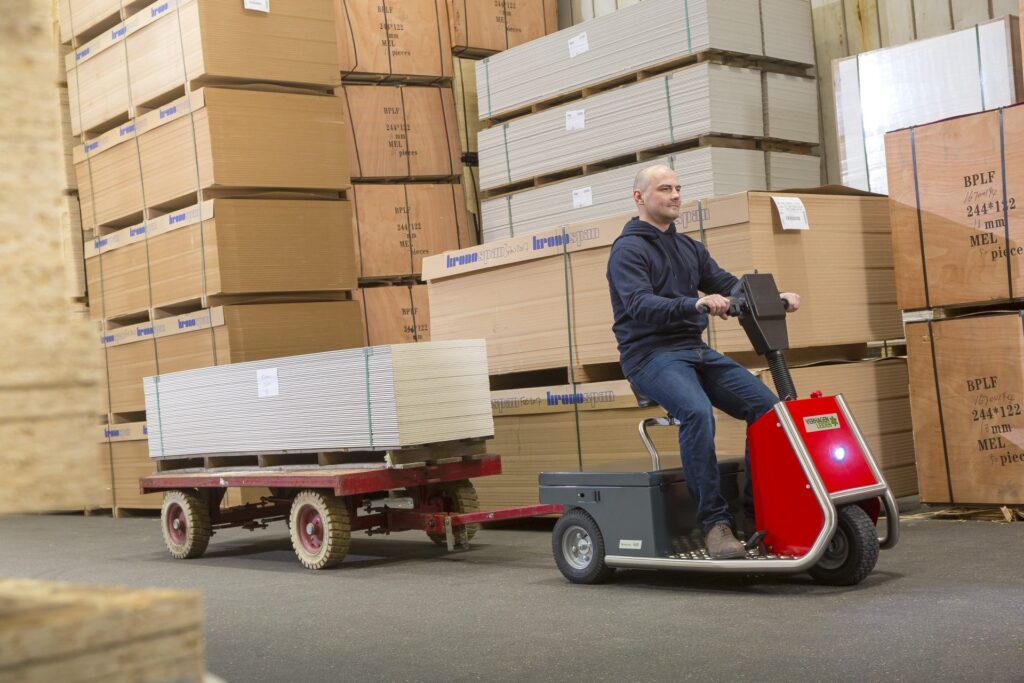How to avoid common warehouse hazards
28th September 2021

Some warehouse hazards are more obvious than others. The lesser-known hazards are often the most dangerous, especially when they go unreported. Warehouses are complex workplaces full of different moving parts and a high volume of staff where even the most minor accidents can cause damaged stock or equipment.
With the increasing popularity of online shopping, warehouses are seeing an increased demand for work. This means companies are hiring underqualified staff to make up numbers. Therefore, warehouse health and safety is more important than ever. This post will cover some of the most common warehouse hazards, along with shocking figures to show how dangerous these hazards are and ways accidents can be avoided.
Slips and Trips
Studies found that 37% of all reported workplace injuries resulted from a slip, trip, or fall in one year. Also, falls caused a staggering 28% of all fatalities in the workplace. These hazards are not always easy to spot, some of the culprits being puddles and sawdust. Falls do not have to be from a height to be dangerous; ground-level falls are especially hazardous when carrying something heavy.
Falls From Height
In the construction industry, falls from height were responsible for 47% of fatalities recorded in one year. Wherever there is a significant drop between floors, a guard railing and clear warning signage are essential.
Companies should always give staff properly accredited training in how to work safely at a height. This includes ladder safety, as unstable ladders can be dangerous. Warehouses should always use high-quality ladders, and the area around the ladders kept clean and clear.
Fires
Fires can destroy a whole warehouse, but luckily fires are also one of the most manageable hazards. Warehouses should always have marked exits, routine fire drills and practice alarms, fire extinguishers and fire doors. Fires spread fast in warehouses due to various flammable goods and packaging often stored there.
Always keep an eye out for worn and exposed wires and old extension cords, as well as extension cords being overused. Warehouses that hold flammable fluids and gasses need to be extra careful; staff must report any leaks. Also, avoid running electrical wires under carpets.
Lack of Training and Education
Warehouses have been known to skip proper training to save money and time; this creates all kinds of hazards and should never be done. Lack of training and education can result in injuries, compensation payouts, lawsuits, and fines.
Unlike forklifts, electric tow tugs can be used without official training or acquiring a license. This is because they are safe and easy to use, so switching your machinery to tow tugs means training is no longer an issue.
Bodily Strain & Fatigue
Most warehouse injuries are due to sudden accidents. Still, strain and fatigue can build up and eventually lead to severe injuries. Fatigue causes risk since it can lead to staff failing to use equipment properly on not concentrating at work.
All warehouse staff should be trained in proper lifting techniques, and investing in equipment that reduces physical strain is crucial. Electric tow tugs are a great investment thanks to being small in size. They are easy to operate, meaning staff will not become fatigued by using them.
Forklifts
Statistics show that, shockingly, forklifts are the most dangerous form of workplace transport in the country, and they are still used in many warehouses across the country. 25% of workplace injuries directly result from forklift truck accidents, meaning 1,300 employees are hospitalised each year with serious injuries.
The leading cause of many forklift-related injuries can be linked to a lack of employee training. Industar believes that, for a safer option, tow tugs are easier to use, so no license is required. They hold loads closer to the ground, meaning visibility is better, and stock is less likely to be dropped. They are also easier to store, meaning they don’t get in the way.
Hazard Reporting
Inform all staff of the importance of reporting hazards. Maybe tell them to read this post to realise just how dangerous warehouse hazards can be. Reporting hazards early can avoid injury. Ultimately, warehouse safety relies on policies, training, and safety equipment.
All workplaces should have a risk assessment, but it is essential due to the added risk in warehouses. https://www.hse.gov.uk/simple-health-safety/risk/warehouse.pdf
Check out this guide to creating a warehouse risk assessment. It is vital to identify all hazards your premise currently has and put measures in place to avoid injury. The guide covers many different safety topics, such as lifting and handling, transport, working at a height, and avoiding fires.
Tugs For Warehouses
Industar stocks a wide range of tow tugs, guaranteed to make transporting goods in your warehouse safer and easier. Not only this, but it also has a variety of industrial vacuum cleaners to keep your warehouse clean and hazard-free.

